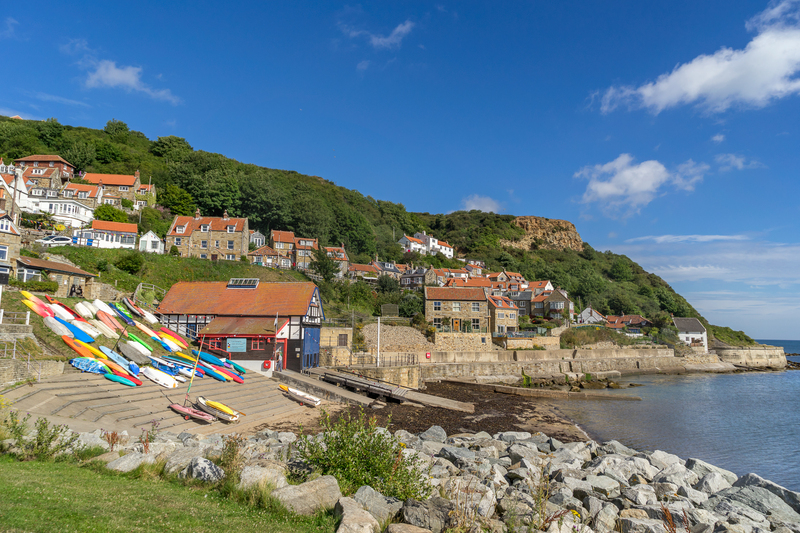Take a Stroll Through Time and Nature: A Tour through Holland Park's Fascinating Past
Posted on 21/11/2024
With its lush gardens, grand architecture, and peaceful atmosphere, Holland Park has long been a beloved spot for locals and tourists alike. Located in the heart of London's Kensington district, this 54-acre park is a delightful escape from the bustling city streets. But beyond its picturesque scenery lies a rich history that dates back centuries. So put on your walking shoes and join us for a stroll through time and nature as we uncover the fascinating past of Holland Park.
The Early Years
Holland Park was originally part of the grounds of Holland House, a grand mansion built in the early 17th century for Sir Walter Cope. The estate was purchased by Henry Rich, Earl of Holland, in 1625 and was passed down through various owners before being acquired by the eccentric Lord Ilchester in 1767. Under his ownership, Holland House became a hub for social gatherings and literary discussions, attracting renowned figures such as Lord Byron and Charles Dickens.

The Victorian Era
In the mid-19th century, Holland House underwent major renovations under the supervision of James Pennethorne. The house was expanded to include lavish rooms and ornate gardens, making it one of the most impressive estates in all of London. During this time, the surrounding area also began to develop into a fashionable residential neighborhood, attracting prominent families such as the Rothschilds and Vanderbilts.
The War Years
Unfortunately, Holland House did not escape the devastation of World War II. In September 1940, the estate was hit by a bomb during the Blitz and much of it was reduced to ruins. However, some parts of the mansion were able to survive and can still be seen today in their original Tudor style.
The Rise of Holland Park
After the war, the remaining estate was converted into a public park with some areas being sold off for housing development. The park opened to the public in 1952 and quickly became popular for its beautiful gardens, including the stunning Kyoto Garden which was presented as a gift from the city of Kyoto in 1991. Throughout the years, various improvements and additions have been made to the park, including the addition of playgrounds, sports facilities, and a caf?.
Today and Tips for Visiting
Nowadays, Holland Park is a tranquil oasis in the middle of bustling London. Visitors can enjoy a leisurely stroll through its sprawling lawns and gardens or take in some cultural events at the open-air theatre. One of the park's main attractions is its resident peacocks who roam freely throughout the grounds. However, as beautiful as they are, it's important to remember that these are wild animals and should not be disturbed or fed by visitors.
When planning your visit to Holland Park, be sure to check out their website for information on current events and guided tours. The park also offers free Wi-Fi and has accessibility for those with disabilities. And don't forget to bring a picnic lunch or stop by one of the many food trucks for a bite to eat while taking in all that this picturesque park has to offer.

Pros and Cons
Pros:
1. Rich history: Holland Park's past dates back centuries and offers a fascinating glimpse into London's aristocratic society.
2. Beautiful scenery: The park's lush gardens and grand architecture make it an idyllic spot for nature lovers.
3. Peaceful atmosphere: This is a great place to escape from the chaos of city life and relax in a peaceful setting.
4. Cultural events: From open-air theatre productions to concerts, there's always something happening at Holland Park.
5. Free admission: Entry to the park is free, making it accessible for all visitors.
Cons:
1. Crowds: In peak season, Holland Park can get quite busy with tourists and locals alike.
2. Limited parking: There is limited parking available near the park, so it's best to use public transportation or walk if possible.
3. Some areas are off-limits: Due to its historical significance, some parts of the park are off-limits to visitors.
Takeaways
1. Plan ahead: With so much to see and do, it's best to plan your visit to Holland Park in advance and prioritize the areas you want to explore.
2. Respect the wildlife: While the peacocks may be a highlight of the park, remember that they are wild animals and should be treated with respect.
3. Enjoy a picnic: Take advantage of the park's beautiful surroundings and pack a picnic lunch to enjoy on one of the many grassy areas.
4. Visit during off-peak times: To avoid crowds, consider visiting the park early in the morning or during weekdays.
5. Take a guided tour: For a deeper understanding of Holland Park's history and features, consider taking a guided tour.
In conclusion, a visit to Holland Park is not just a walk through nature, but also a journey through time. From its royal beginnings to its present-day charm, this park offers something for everyone. So next time you find yourself in London, take a break from the city sights and immerse yourself in all that Holland Park has to offer.





